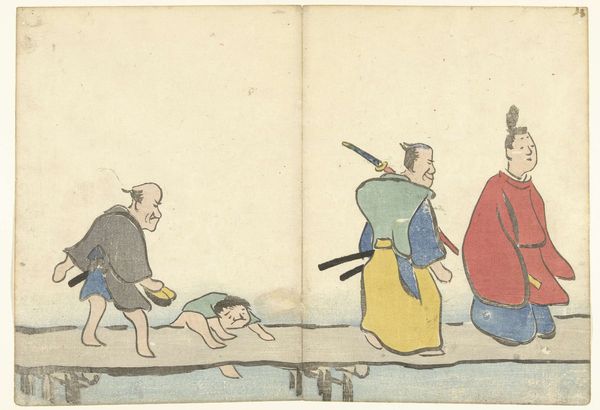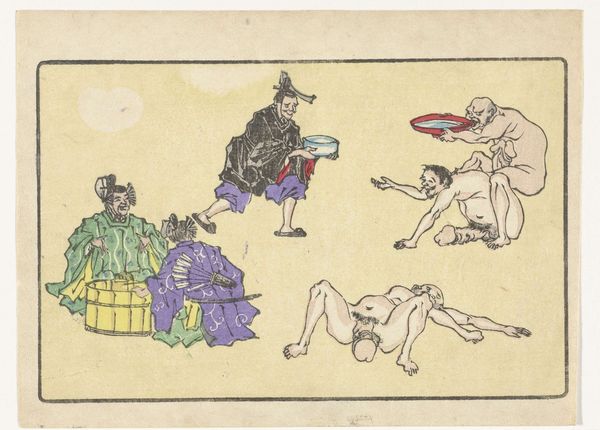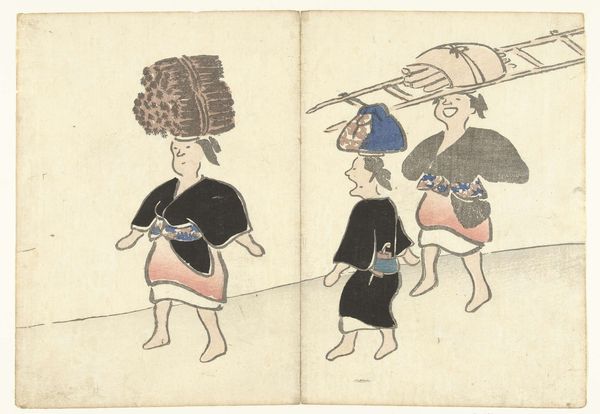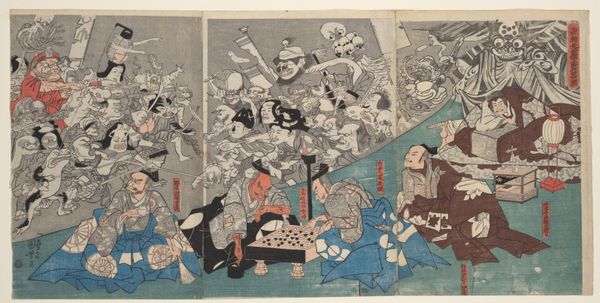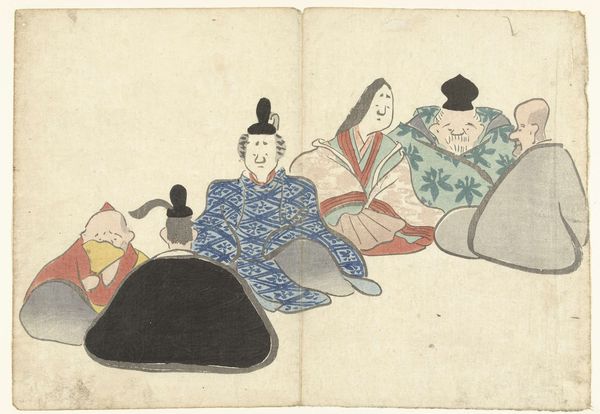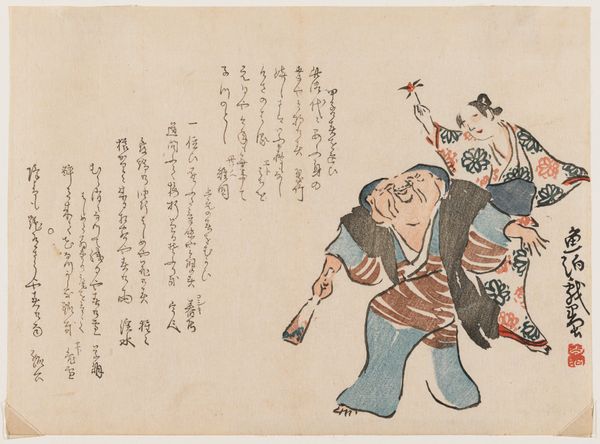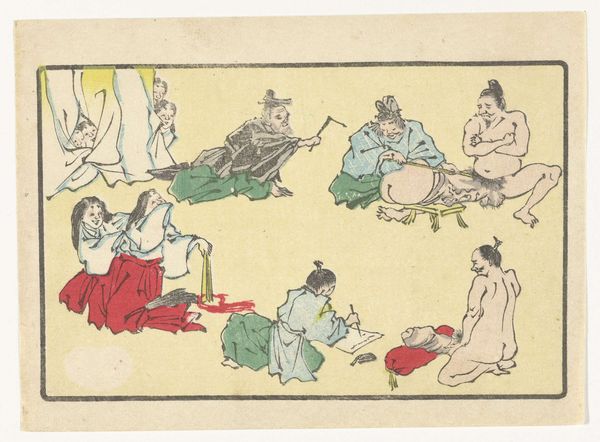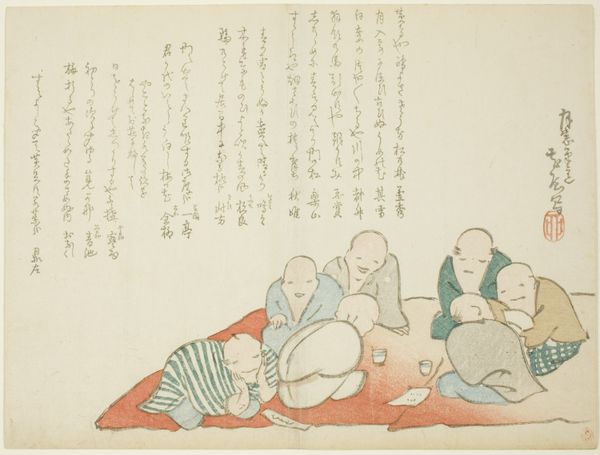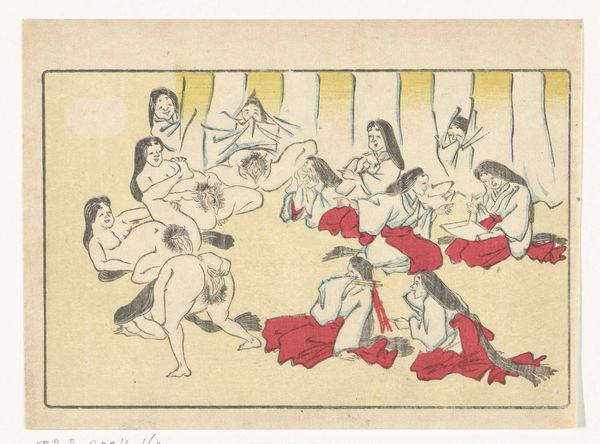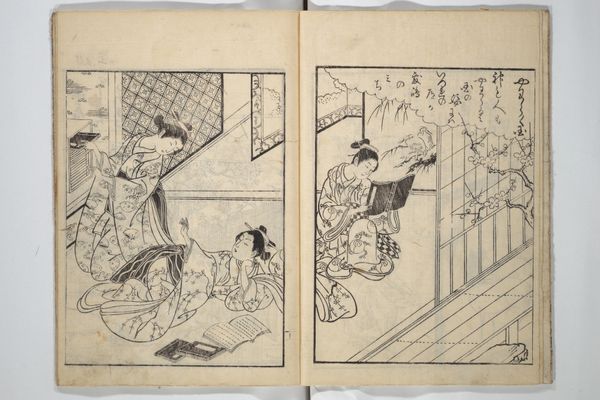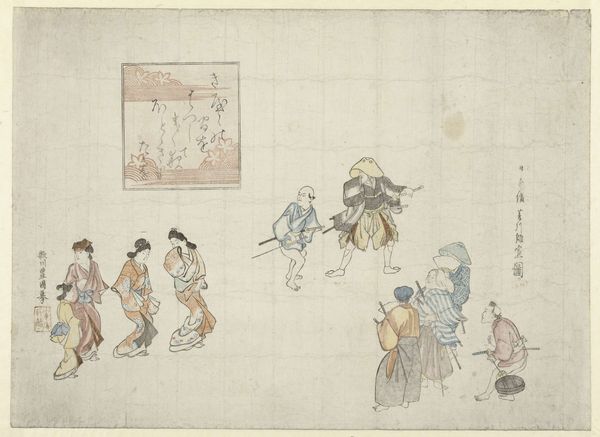
drawing, print, paper, ink, woodblock-print
#
drawing
#
narrative-art
# print
#
asian-art
#
ukiyo-e
#
figuration
#
paper
#
ink
#
woodblock-print
#
genre-painting
Dimensions: height 255 mm, width 367 mm
Copyright: Rijks Museum: Open Domain
Curator: Well, hello there. Isn't this lively? Editor: It's almost chaotic, actually. My eye darts everywhere at once, a riot of movement. Is it a drawing or a print, because it seems very fluid. Curator: Good question! It’s titled "Blindemannetje Spelen", and dates back to 1826. Its actually a woodblock print in ink and colour on paper, from the Ukiyo-e tradition, and its author is Nakamura Hōchū. Editor: Oh, a print! It feels much more immediate than I expect from that medium. There’s an almost caricatured energy in the figures... Look at their goofy faces, how they lunge! Did Nakamura ever see anyone actually play that game? Curator: Well, "Blindemannetje Spelen", as the title says, represents children playing blind man’s buff – Blind Man's Bluff. But the Ukiyo-e style itself is key; this translates to "pictures of the floating world," representing everyday life, leisure, and fleeting moments in Japanese culture. The game serves as a kind of microcosm of chance and misdirection. Editor: That sense of transience, of the "floating world," really sings. You get it especially in the expressions, don't you? How extreme the emotions feel? It’s like these figures exist only for the moment, totally absorbed by the pursuit. It's quite unnerving actually, but fun too. Curator: Absolutely. And, thinking about symbols and archetypes, the "blind man" figure resonates deeply across cultures as a symbol of fate, lack of control, or even wisdom through a different kind of seeing. Here, I feel he represents perhaps, how playful delusion can grip the crowd in any kind of activity, that even childhood is not without dangers or deceit. Editor: Right, right! Because think about the others' faces. There’s something sly, or cruel, about some of them, too! As if some people in the game knew, had hidden knowledge they're keeping, just to watch what's happening. Like a strange lesson of complicity and schadenfreude right there in the schoolyard. Dark for something presented as fun, no? Curator: Very perceptive. Ukiyo-e aren’t just picturesque scenes but often coded commentaries on society and behavior. Nakamura offers here a timeless snapshot into social dynamics and psychology embedded in a child's game. Editor: And now the riot turns sour. Well, thank you for your wisdom, it’s going to be difficult to pass along this print without warning people of that dark message in its folds.
Comments
No comments
Be the first to comment and join the conversation on the ultimate creative platform.
